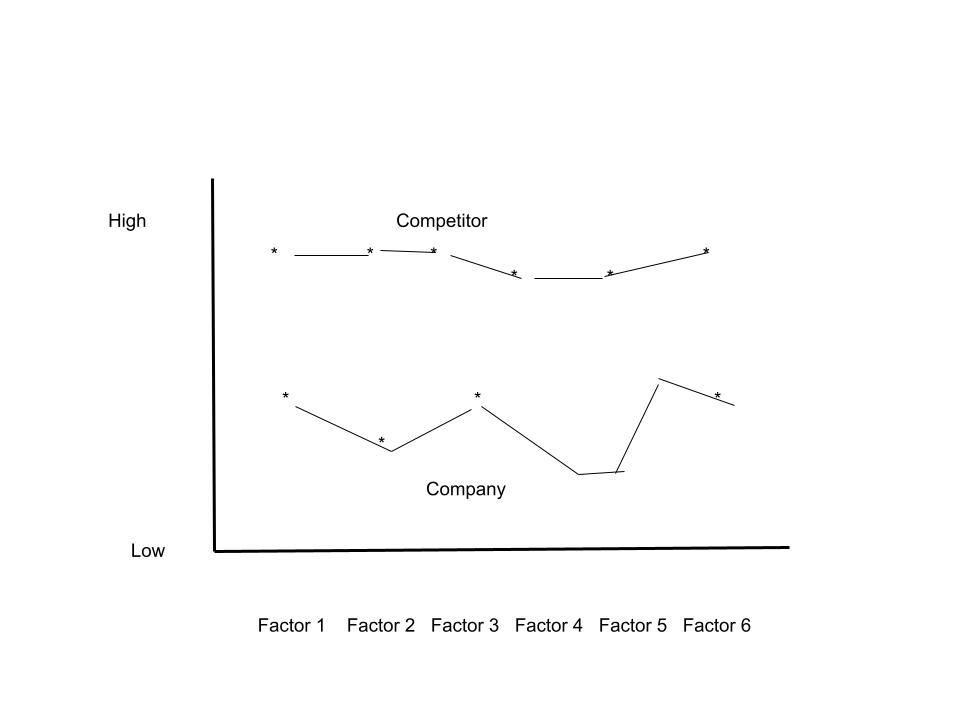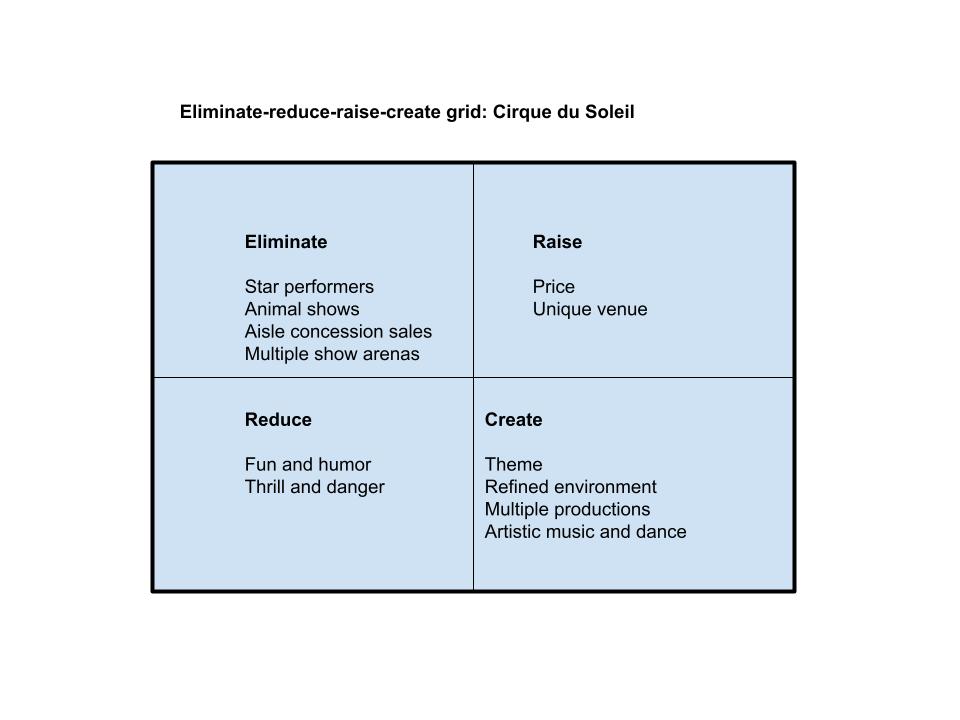The Blue Ocean Strategy Canvas
According to Chan Kim and Renee Mauborgne, “The strategy canvas is both a diagnostic and an action framework for building a compelling Blue Ocean strategy. It serves two purposes. First, it captures the current state of play in the known market space.”
The canvas allows you to understand where the competition is currently investing, the factors the industry currently competes on in products, services, and delivery, and what customers receive from the existing competitive offerings on the market.
Horizontal axis: what factors competitors compete on. These are the critical promotional factors of the product.
Vertical axis: The offering level the buyers receive across all these key competing factors. A high score means the company offers buyers more and hence invests more in that factor.
The value curve, the fundamental component of the strategy canvas, is a graphic depiction of the companies relative performance across its industry factors of competition. This curve is their strategic profile.
When the competitor’s profiles are all similar, it won’t work to offer a little more for a little less. A new strategy may nudge sales up but will hardly drive a company to open up uncontested market space. Nor is conducting extensive consumer research on the path to blue oceans. Their study found that customers can scarcely imagine how to create uncontested market space.
To shift the industry’s strategy, you must begin by reorienting your analysis from competitors to alternatives and from customers to non-customers. To pursue both value and low cost, don’t benchmark competitors look at differentiation you should resist the old logic of benchmarking competitors in the existing field and choosing between differentiation and cost leadership.
As you shift your strategic focus from current competition to alternatives and non-customers, you gain insight into redefining the problems the industry focuses on and thereby reconstruct buyer value elements that reside across industry boundaries.
Conventional strategic logic, by contrast, drives you to offer better solutions than your rivals to existing problems defined by your industry.
What makes up the definition of value? If the difference is very slight, you may have to create a new value. For example, with inexpensive wines, people had difficulty distinguishing between brands, and the prices were very similar. Therefore, the company had to create a wine with a new, different taste.
The four actions framework
Chan and Mauborgne developed the four actions framework to reconstruct buyer value elements. Your want to break the trade-off between differentiation and low cost, and to create a totally new value curve. Therefore the key questions to challenge an industry strategic logic and business model are:
- Which factors does the industry take for granted that should be eliminated?
- Which factor should be reduced well below the industry standard?
- Which factor should be raised well above the industry standard?
- Which factors could you create that have never been offered?
Question one forces you to consider eliminating factors that companies in your industry have competed on forever. Those factors often taken for granted may no longer have value or may distract from value. Also, a fundamental change in what buyers value could have occurred. Often companies that focus on benchmarking don’t see these changes.
Question two forces you to determine if products or services have been overdesigned to match competition. If true, they are increasing their costs for no gain.
Question three pushes you to uncover and eliminate the compromises your industry forces customers to make.
Question four helps you discover entirely new sources of value for buyers, create new demand, and shift the strategic pricing of the industry.
By pursuing the first two questions — eliminating and reducing — you gain insight into how to drop your cost structure. Managers rarely set out to eliminate and reduce factors Rarely do managers systematically set out to eliminate and reduce factors on which they compete. This can result in mounting cost structures and complex business models.
The second two factors, by contrast, provide you with insight into lifting buyer value and creating new demand. Collectively, they allow you to systematically explore how to create value and new experiences across alternative industries and keep your cost costs down.
Applying these four actions framework to the strategic canvas of your industry, you get a revealing new look at old perceived truths.
The eliminate -reduce – raise – create tool. There is an additional third tool, the — eliminate -reduce – raise – create tool — that is key to Blue Ocean strategy. It is a supplementary tool or analytic to the four action framework. The grid pushes companies to ask all four questions in the four actions framework and then think about how you could create a new value grid. This has some immediate benefits:
- It pushes you to simultaneously pursue differentiation and low costs to break the value-cost trade-off.
- Immediately flags companies that focus only on raising and creating, thereby lifting their cost structure and often over-engineering products and services, a commonplace in many companies.
- Managers easily understand it at any level, creating a high level of engagement in its application.
- It drives companies to scrutinize every factor the industry competes on, enabling them to recognize the assumptions they make in competing in the industry.

